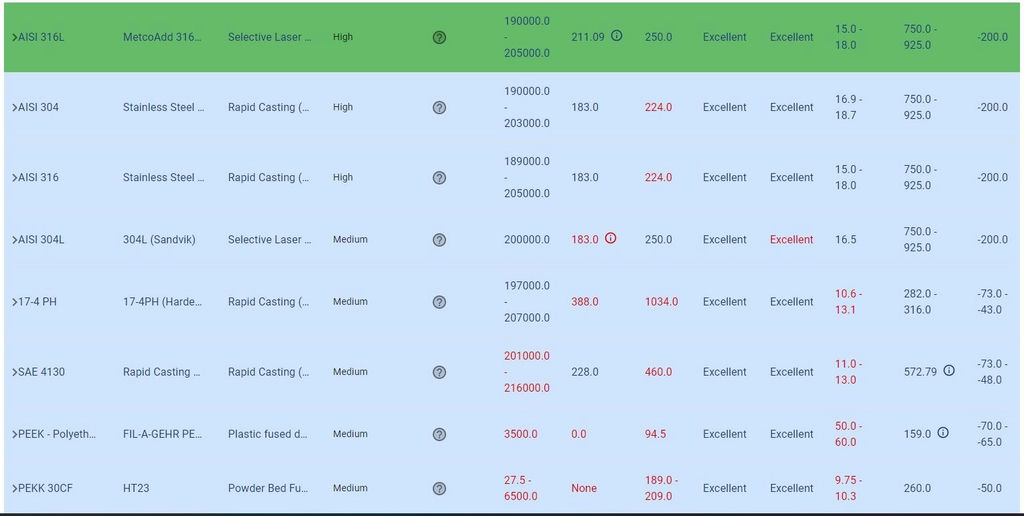Despite being new to 3D printing, in 2021, Ocyan ’s supply chain team led by Caroline Mozer and Lineu Aguiar championed the idea that additive manufacturing could reduce supply chain costs, in the context of a strategic initiative on supply chain optimization. The company wanted to look at a significant number of parts to evaluate their AM potential. In 11 weeks, with Spare Parts 3D’s proprietary software DigiPART, the project team analyzed 17 000 spare parts from Ocyan’s inventory (with no 3D files). Depending on which supply chain issue the team looked at (lead time reduction, minimum order quantity optimization, simple cost reduction, etc.), the number of 3D printable parts bringing value totaled up to 11% of total parts analyzed.
Analyzing part without 3D files: it’s possible
Despite there being no 3D files on hand, Spare Parts 3D’s software, DigiPART, and its machine learning based algorithms allowed to process the available ERP/PLM data. Starting with DigiPART’s semantic recognition algorithms, the team managed to structure the inventory into part categories (valve, gaskets, filters, seal rings…) and match equipment (e.g. drilling), as well as working environment (e.g. underwater), to establish the functional specification blueprint of each part. With those prerequisites, DigiPART then ran its “AM transfer” algorithm which yielded a set of AM technical solutions for each part.

This process was significantly eased because of SP3D increasing O&G experience. DigiPART’s machine learning based algorithms are “trained” on over 250 000 parts, clustered into 2 000 part categories, 7000 equipments all from O&G industry. That made it very efficient to precisely identify and select the most suitable additive manufacturing solutions (SP3D’s database contains more than 3500 materials) for the applications at Ocyan.
From analysis to results: Pragmatic approach
Practically, the Ocyan team took the results from the analysis and used DigiPART to focus first on parts with cost reduction potential and low criticality. Typically, on cost reduction: 1 886 SKUs were identified as highly printable and with cost reduction benefits (with cumulated potential gain of several MUSD).
This gave way to the first printed part in the company’s history. Quite an achievement!

What was also achieved by the Ocyan team, beyond the actual printing of a part, was the creation of a common framework to build the additive manufacturing adoption roadmap for spare parts. The 2 next steps are already in sight with:
- a focus on metal parts with strong lead time reduction business case and with materials the company is comfortable with, such as SS316L.
- Looking at more innovative solutions such as replacing metal parts with high-end polymers which can bring significant savings.
The team can now keep using DigiPART to update its digital inventory as new additive manufacturing technologies become available and revisit spare part business cases if and when supply chain drivers change (lead time, inventory cost, MOQ, etc.)
As Christian Darquier, VP sales at SP3D said: The project with Ocyan is further proof that additive manufacturing can create significant value. We were fortunate to have an Ocyan’s team dedicated and driven to push the idea. The key now is to keep driving the conversion of traditionally made part into 3D printed parts where it makes sense. With DigiPART this conversion is made much easier.
As Lineu Aguiar from Ocyan said: This partnership with SP3D allowed us to kickstart our additive manufacturing journey and leverage it as a real strategic value driver for supply and engineering. We are looking forward to a continuing partnership with SP3D to further decarbonize our supply chain and increase our savings.
Subscribe to AM Chronicle Newsletter to stay connected: https://bit.ly/3fBZ1mP
Follow us on LinkedIn: https://bit.ly/3IjhrFq
Visit for more interesting content on additive manufacturing: https://amchronicle.com/

